Every project has its issues. Issues are problems that arise during the execution of the project. Plan as thoroughly as you like, you’re still going to face problems, even if you use project planning software. Problems during a project are a given, and solving them in real time while maintaining project progress is a real challenge.
Risks are a bit different than issues; risks are issues that haven’t happened yet. By identifying what risks are probable, you can prepare for them and have a response in place if and when they show up in your project.
But once the plan is in place, and you’ve detailed all the risks likely to occur over the life cycle of the project, the next step is having a system in place to monitor and track the risks that might happen, and the issues that do. That’s called risk or issue management. But you can take that management even further by using what’s called a RAID log.
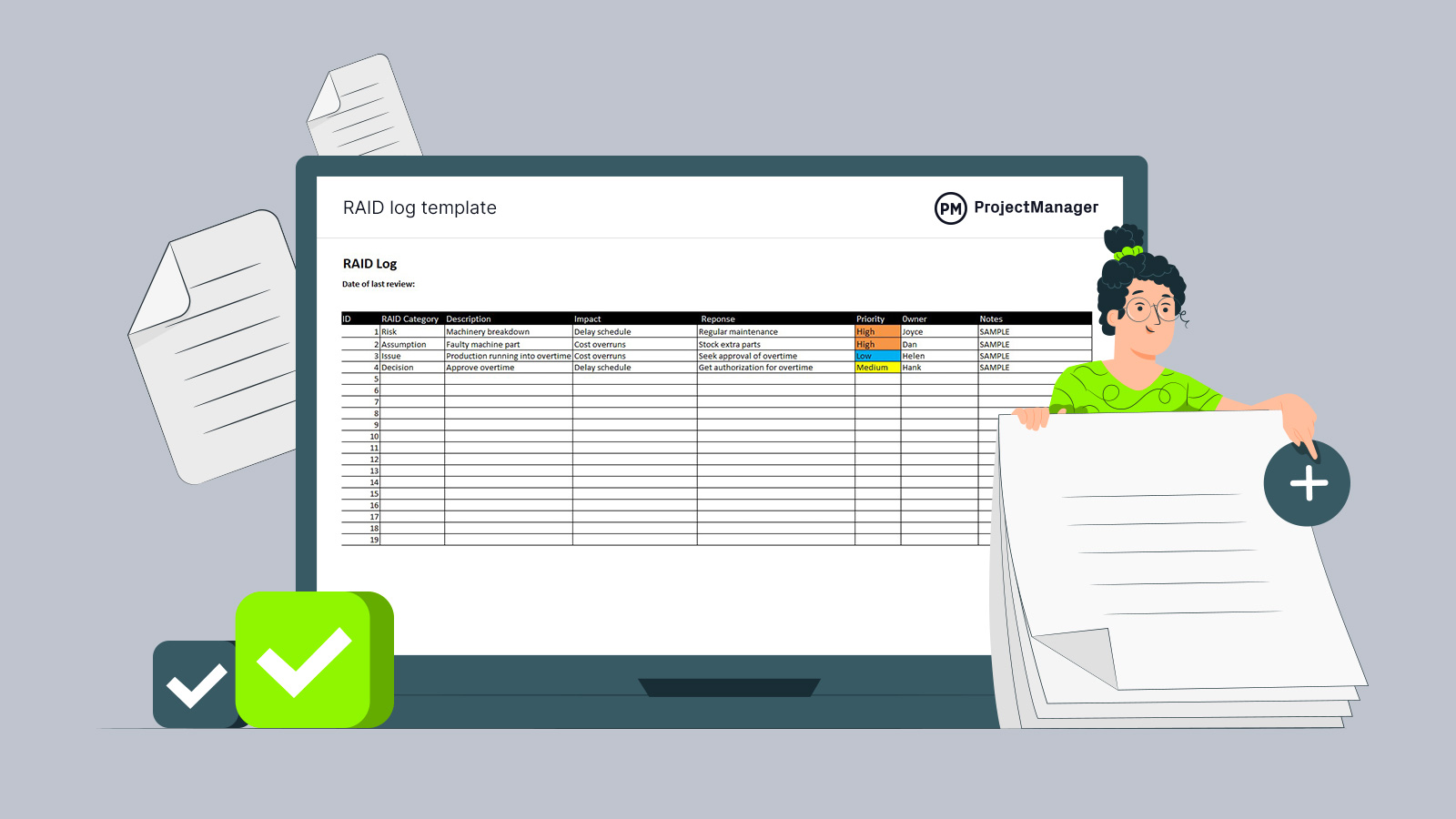
Get your free
RAID Log Template
Use this free RAID Log Template to manage your projects better.
Get the template
What Is a RAID Log?
RAID is an acronym that stands for Risks, Assumptions, Issues and Decisions.
- Risks are the potential problems lurking in your project. Risks tend to be thought of as hurting the project, but there are also positive risks.
- Assumptions are conditions that need to occur for the project to go as planned
- Issues are when something goes wrong in the project. If an issue isn’t managed and resolved it can derail the project or cause the project to fail.
- Decisions are how you decided to act in the project.
A RAID log, therefore, is a project management tool that tracks risks, actions, issues and decisions. It’s a simple way to organize this information and comes in handy during meetings and project audits.
Using a RAID log is a good start, but project management software is more thorough. ProjectManager is award-winning project management software that has risk management features that help you identify, track and mitigate risk, issues and changes in your project. Create risks or issues as you would a task. You can add tags to make it easier to find by filtering and then view the risk across our Gantt chart, list, board and calendar views. Generate reports to track your progress and more. Get started with ProjectManager today for free.
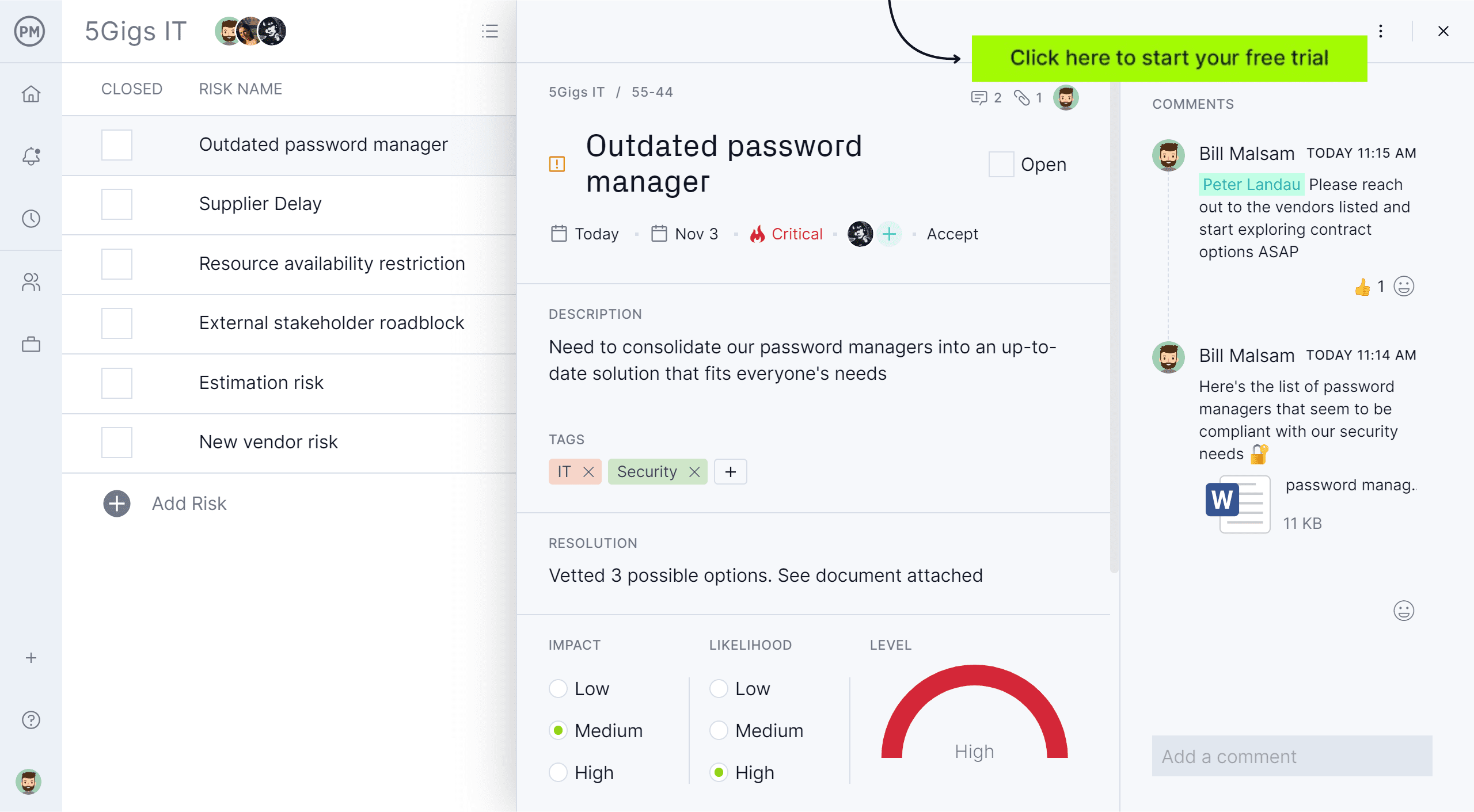
How to Use a RAID Log
A RAID log is fairly simple to use. Start by filling in information for the four topics listed above: risks, assumptions, issues and decisions.
Risks
With risks, you list those that think might occur over the life cycle of the project. For each of the risks, you note the probability of it actually happening. Then write what actions you plan to take if it does show up and how those actions will resolve it.
Each project risk should be given to an owner who is responsible for catching the risk if it becomes an issue, and for implementing the plan to resolve it. You can also set up review dates to monitor the progress of that fix or just check in occasionally to see if the risk has increased or decreased in its likelihood.
Assumptions
For the assumptions section, there needs an owner, too. The owner would be assigned an action item for each assumption that you listed that needs to be done. Having an owner makes sure that the assumption is monitored and verified to be true and will not fall through the cracks of a busy project.
The assumptions, whatever they are, need to be charted. That is noted on the date they are completed. During project meetings, refer to this list and check off those actions that have been completed to make sure there’s been follow-through.
Issues
Issues come up in a project, and each one needs to be identified here. Note what the plan is for dealing with the issue, who is going to lead that issue management initiative, what the schedule for review will be and how it will be marked done when resolved.
Decisions
As for decisions, again this is merely a list of decisions that need to be made throughout the project. Consider it a way to collect the thought process of the project, a record of what decisions were made, who made them and why.
As you can see, a RAID log is merely a method for keeping all this information organized and easily managed during the project. It’s not hard to learn but it can be somewhat of a hurdle to clear at first. But once you get used to keeping a paper trail of these four topics, it’ll become second nature and prove an asset.
RAID Log Template
This RAID log template allows you to list down your project risks, assumptions, issues and decisions. In addition, you can describe their impact, response actions, priority and who is responsible for them.
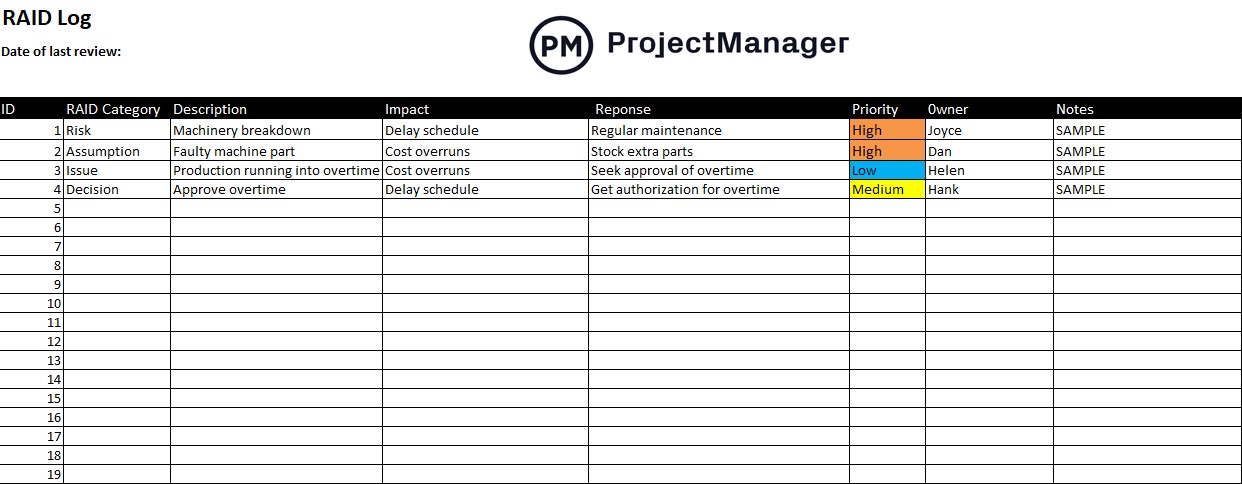
Who Should Use a RAID Log?
Project managers use a RAID log to help oversee factors that could impact a project, such as risk, assumptions and dependencies. This allows them to better distribute tasks, justify their choices and evaluate the success of their efforts.
Business analysts use a RAID log to understand business requirements, assess risks and identify issues and dependencies. A risk manager will use the RAID log to help identify, assess and prioritize risks, which helps to develop better strategies to mitigate those risks.
Team leaders and supervisors can keep track of their team’s tasks, identify potential issues and ensure that projects are moving forward as planned. A RAID log helps leaders organize information to share with their team so everyone understands the project’s goals and strategies. This is also true for functional department managers in any company as well as operations managers or even executives.

When to Make a RAID Log in Project Management
A RAID log is used when managing complex projects with multiple variables that could impact the project’s success. They are also useful for organizing agile projects, especially when documenting action items and when there are larger project teams.
During periodic reviews, a RAID log is used to assess the status of each factor and engage stakeholders in the review process. The RAID log is more comprehensive than a risk register because it includes assumptions or actions, an issue log and dependencies or decisions in addition to documenting risks. They can get complicated, which leads to information overload.
RAID Log Example
To better illuminate the RAID log and how it’s used, let’s imagine a real-life construction project example. Acme Construction is building a factory, but after negotiating with vendors they expect a potential price increase for lumber, which will threaten their budget and profit margin. There could also be a shortage, which will lead to delays and other risks associated with project materials. There are other potential risks such as adverse weather conditions, machinery breakdown, labor shortages and subcontractor default.
Using a risk matrix, they example the potential impact on the project and with that knowledge create a risk mitigation strategy, which is to seek out multiple vendors to help Acme negotiate a more competitive price for the lumber, find new supplies and so forth.
This risk management plan is made out so Acme has connections with these secondary vendors in case there’s a price hike. As they plan, a decision matrix helps them pick the best course of action. With that knowledge, they develop an action plan and throughout the project update the RAID log to ensure they’re ready if the price spikes or materials are sparse. Here’s what this RAID log example looks after some of these risks have become issues.

As can be seen in the RAID log above, the potential risks that were identified before the project execution phase started became issues that delayed the project schedule. Therefore, the construction project management team decided to allocate additional resources to speed up the execution of the project so that it can be delivered on time.
How to Make a RAID Log Step-by-Step
Here’s a more detailed description of each step in the process of making and updating a RAID log throughout a project.
1. Identify Risks By Making a Risk Breakdown Structure (RBS)
A risk breakdown structure is a chart that helps project managers identify and organize risks in a project. It lists risks in order of likelihood and serenity and groups them by type. This helps to cover all project risks.
2. Analyze Potential Risks with a Risk Matrix
A risk matrix is a tool that helps analyze potential risks by assessing their likelihood and severity during project planning. It begins by identifying risks, determining the likelihood of that risk occurring, assessing its impact, assigning a risk score and mapping out and prioritizing risks.
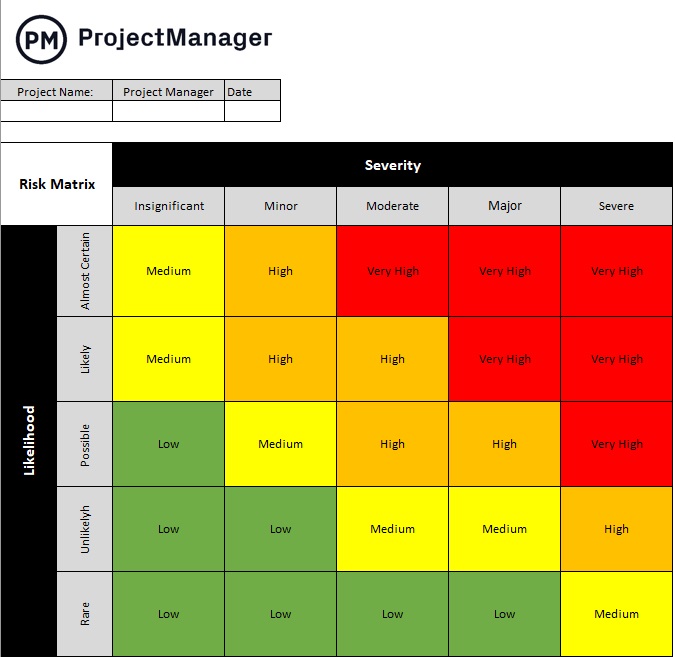
3. Plan Risk Mitigation Strategies
Once risks are identified and the likelihood of their occurrence and, if they do, what impact they’ll have on the project has been listed, it’s time to figure out what to do if the risk becomes an actual issue. This is a risk mitigation plan and having one in place before the risk occurs helps teams respond quickly and effectively.
4. Write a Risk Management Plan
To mitigate the risk, a risk management plan is needed. This process includes identifying the risks, assessing them and how to mitigate them. Assigning responsibilities for tasks to team members who will be responsible for mitigating the issue. Then develop contingency plans just in case. Be sure to communicate the plan and train staff to respond effectively. And always be monitoring for new risks.
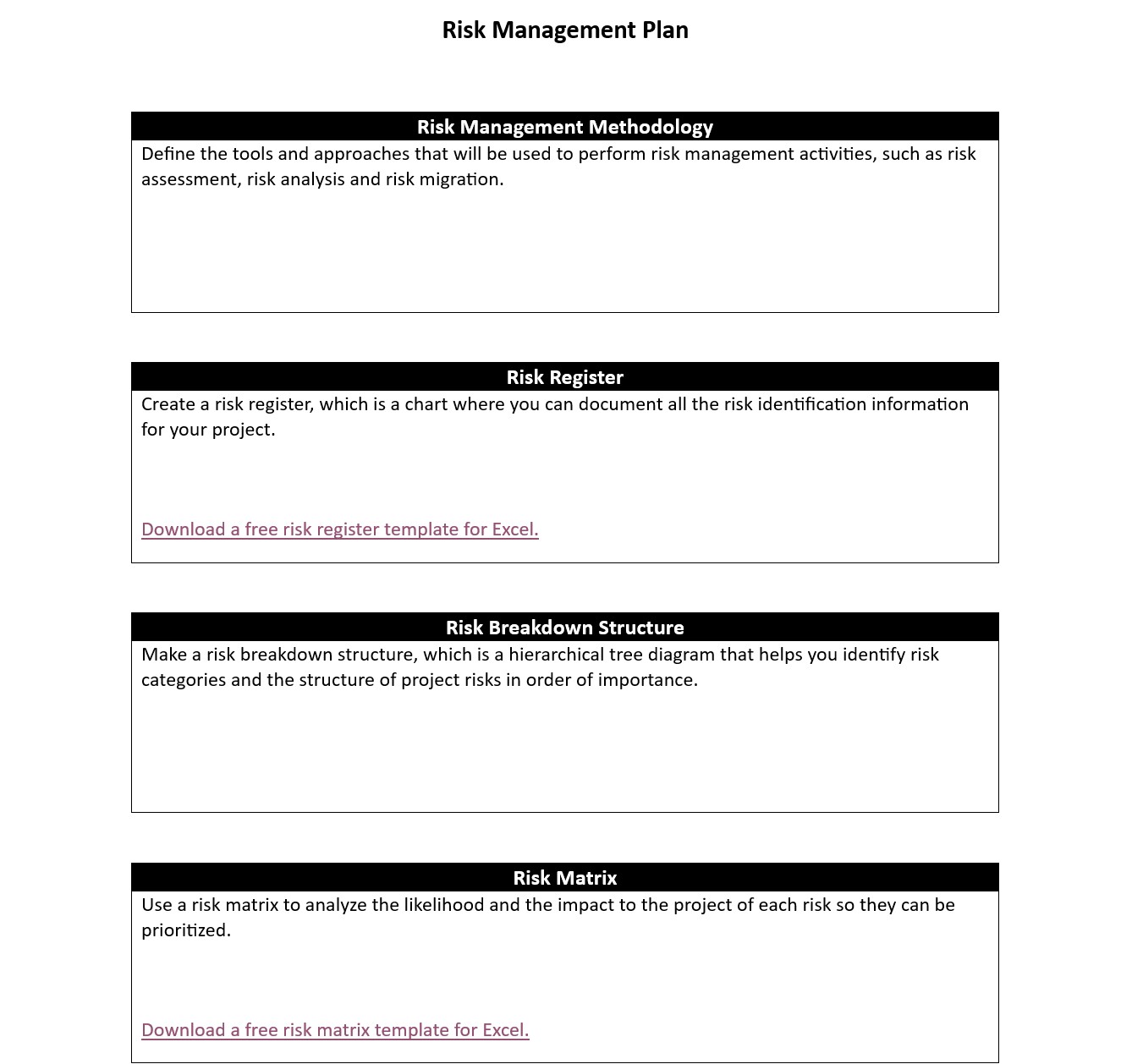
5. Use a Decision Matrix to Choose the Best Solution to Issues as They Occur
A decision matrix lists all the options and factors that need to be considered when responding to an issue. These are scoured and weighted by the relative importance of the factor. Adding these scores helps to give an overall score for each option.
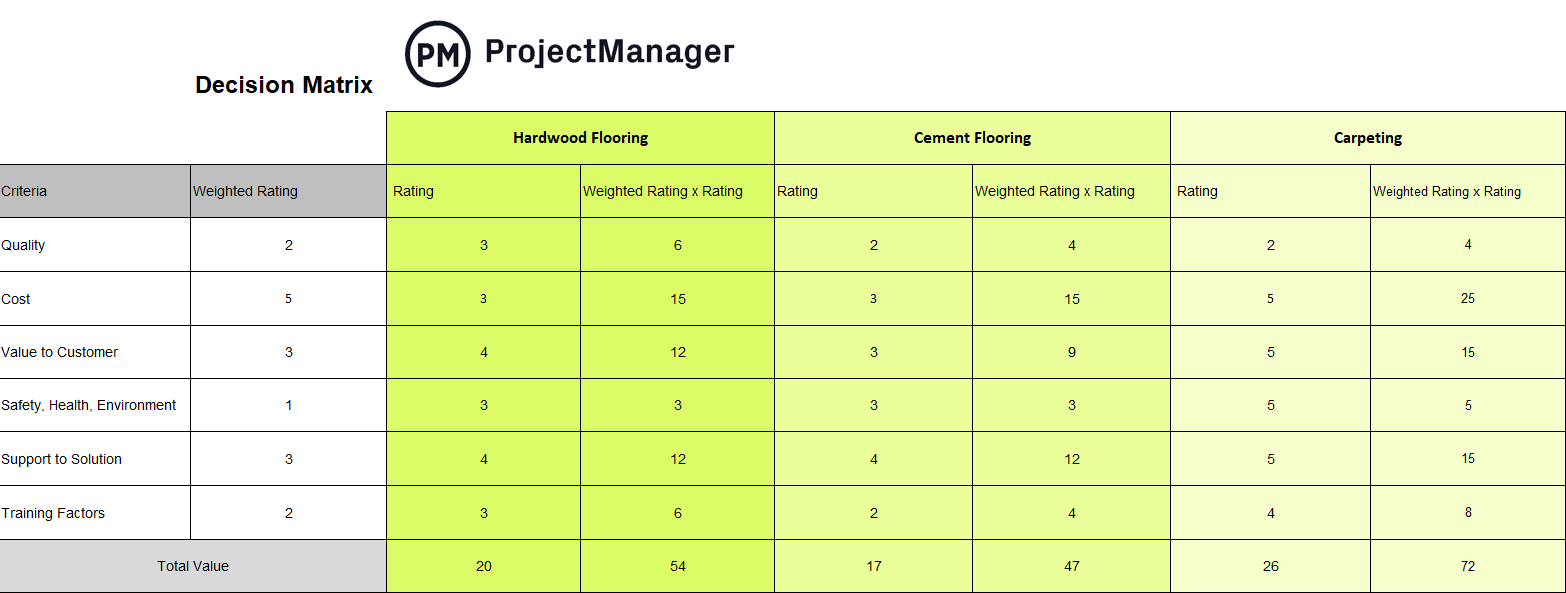
6. Make an Action Plan for the Mitigation of Issues
Once risks have been identified and a mitigation strategy has been determined, an action plan is created. This is a series of steps or tasks that will be implemented by assigned team members to mitigate the risk. Managers will monitor this to ensure that it is being implemented correctly and promptly.

7. Update and Monitor the RAID Log Throughout the Project Life Cycle
A RAID log is not done once but is a living project management document. It should be reviewed and updated throughout the life cycle of the project. The more current the data collected in the RAID log, the more likely the project will be able to handle issues as they arise.
Pros and Cons of Using a RAID Log
There is never a magic bullet that can pierce all problems, and a RAID log is no different. There are pros and cons to using this project management chart.
Pros
The most obvious benefit is that a RAID log makes you think in an organized and strategic way about a project. It helps you collect a mass of data that would be highly unlikely to remain in one’s head without some method to collect them.
Consider the RAID log a shortcut, and any busy project manager will appreciate that, as time is precious when managing a project. It’s also a shortcut for communications, as the information you gather is not easily disseminated to those who need to know it.
Piggybacking on that pro is the fact that a RAID log helps you maintain control over the project. Most questions you might get from a stakeholder are going to be answered in the RAID log, which means less running around trying to figure things out.
Basically, you’re controlling the data of your project so it’s easily accessible. There’s always a lot of information spinning around the project, so this is an asset. Plus, as risks materialize and issues arise, you have a system to control and monitor them, so they don’t sideline the project.
The RAID log is a template to capture those plans and, better still, a ruler to measure how effectively they’re being carried out. With every risk having a project member responsible for identifying and resolving it, you’re going to, again, have more control over the project and the process of risk management.
With a RAID log, your decision-making is more consistent. A project is made up of a swarm of planning decisions, and that’s just in one day, so while there are minutes in meetings, the RAID log captures those decisions that are taking place in a more informal setting. Now you and your stakeholders have a detailed record of all the decisions that occur over the life cycle of the project, with reasoning as to why they were made, when and because of what.
What assumptions were made during the project? There are plenty, but now you don’t have to rely on someone’s memory to retrieve them. While some might be unimportant, others are not, and it is not always clear at the time which is which.
Cons
Sometimes, on a larger project, the RAID log will have to be reviewed often. The frequency of these reviews can make it feel as if you’re constantly looking over the RAID log.
Therefore, it’s easy to get lost in the details. So, the best way to approach a RAID log is by having a good idea of how deep into the woods you want to go with each of these subjects. Too far and you’re going to bog down and miss the important stuff. But if you’re too cursory in your approach, then it defeats the purpose of the RAID log and virtually renders it useless.
What is too much information and what is too little? That can often be clearest in hindsight, though, and you don’t have the luxury of managing a project backward. You can prioritize the issues as high or low, which is one way to determine how much data will be required.
Also, you need to approach each section of your RAID log with a different mindset. Issues are different than risks, for example. Maybe you want to keep a series of RAID logs, one for each section, rather than combining the four categories into one log.
ProjectManager Helps Turn Cons into Pros
A RAID log could be as simple as a spreadsheet. All you need is a place to save the collected data. But that’s the minimum, and if you have more dynamic software then you have a more dynamic RAID log. ProjectManager is cloud-based project management software that delivers real-time data to help you identify, track and mitigate risks, issues and changes in real time.
Get a High-Level View With Real-Time Dashboards
Our software helps project managers and their teams work more efficiently and productively, and that same technology can be applied here to help run a RAID log more efficiently. Our tool tracks risks, progress and changes in your project with a real-time dashboard. There’s no time-consuming setup necessary as with lightweight tools. We’re ready when you are with easy-to-read graphs and charts that track time, costs and more in real time and more accurately than a RAID log.

Go Deeper Into the Data With Customizable Reports
If you want to get more details than a dashboard can provide, we have many reports that can be generated with a couple of keystrokes. Every report, from status and portfolio reports to variance, workload, time, cost and more, can be filtered to show only the data you want—even filtered by tag so you can track risks, issues and changes to the project. You can also easily share the reports to keep stakeholders updated.
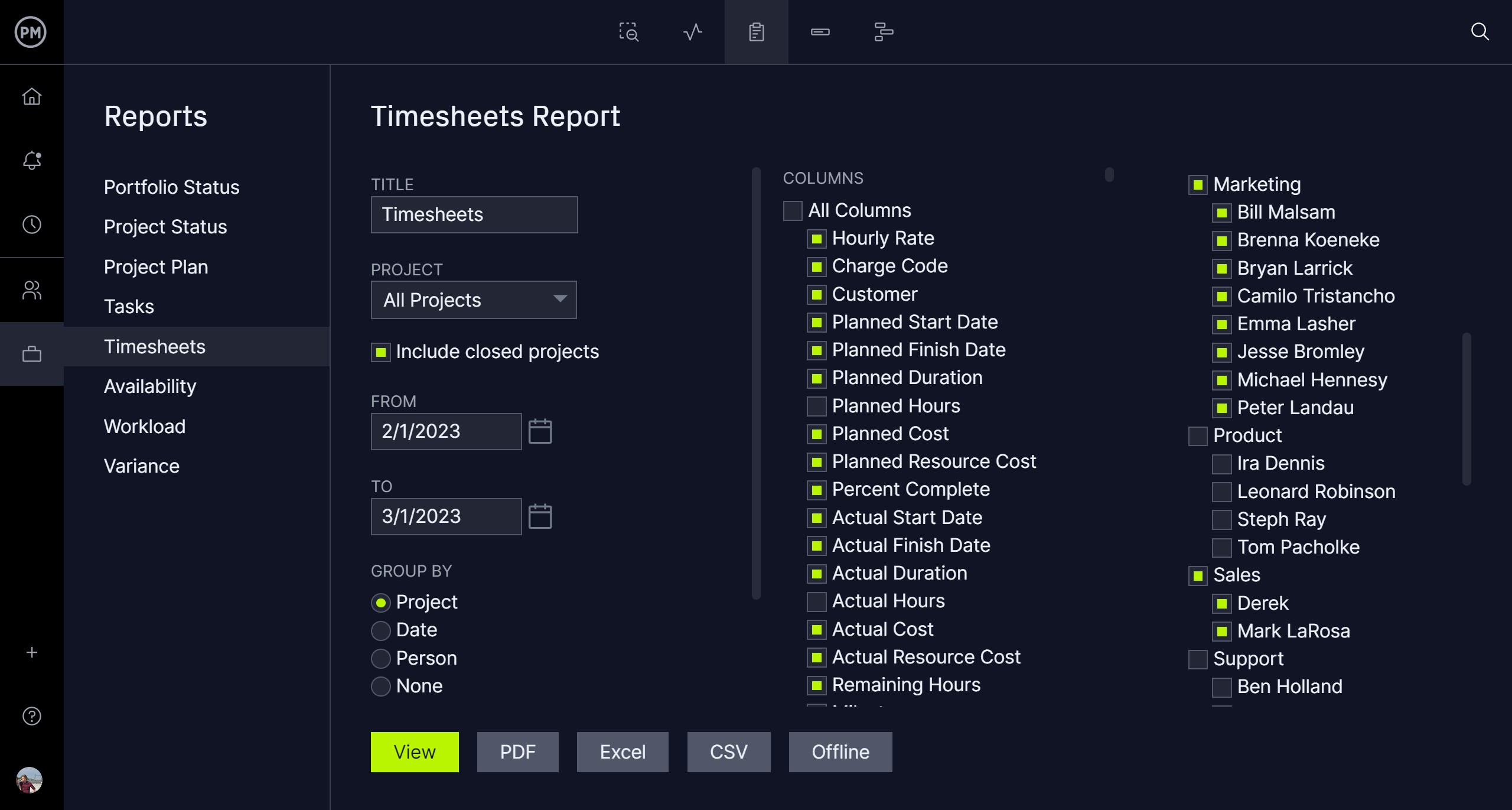
That’s only some of the features you’ll find. Managing risk means you need robust resource management tools. Our software can help you know the availability of your team and then use a color-coded workload chart to balance their allocation and keep teams productive. No other software gives you this much control with such easy-to-use tools.
ProjectManager can make the useful RAID log even more useful by making it simple to track the issues, risks and more in your project. Its cloud-based software has tools such as a real-time dashboard and offers a collaborative platform making it easy for team members to update their status, so you’re always getting a current view of the project. Get started with ProjectManager today for free.

